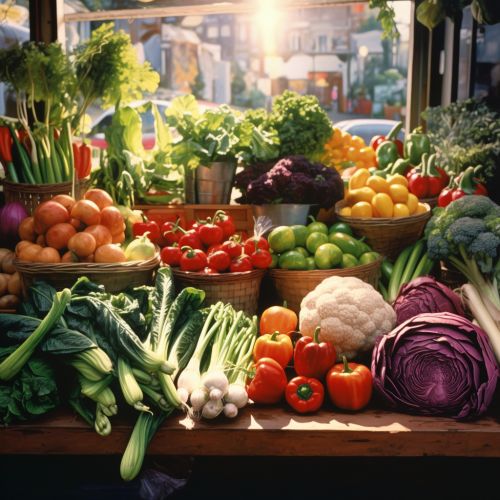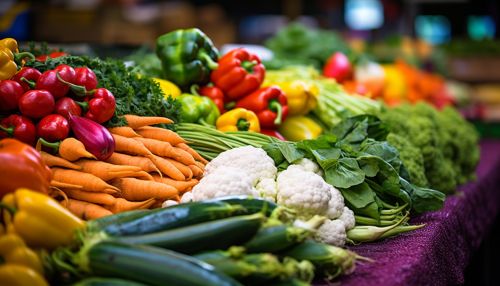Vegetables
Introduction
Vegetables are a broad group of plants consumed by humans and other animals as food. They are a primary source of essential nutrients and form a significant part of a balanced diet. Vegetables can be consumed in various forms, including raw, cooked, canned, frozen, or as ingredients in processed foods.


Classification
Vegetables are classified into several types based on the part of the plant they come from. These include root vegetables, stem vegetables, leafy greens, bulbs, tubers, and fruits that are commonly considered vegetables.
Root Vegetables
Root vegetables are plant roots used as vegetables. Examples include carrots, radishes, beets, and turnips. They are typically high in carbohydrates and provide a good source of dietary fiber.
Stem Vegetables
Stem vegetables are the stems or shoots of plants. Common stem vegetables include asparagus, bamboo shoots, and rhubarb. They are often rich in vitamins and minerals.
Leafy Greens
Leafy greens are plant leaves eaten as a vegetable. Examples include spinach, lettuce, and kale. They are typically low in calories and high in vitamins A, C, and K.
Bulb Vegetables
Bulb vegetables are plant bulbs consumed as vegetables. Examples include onions, garlic, and leeks. They are often used for their strong flavors and aromas in cooking.
Tubers
Tubers are enlarged structures in some plant species used as vegetables. Potatoes and yams are common examples of tubers. They are a rich source of carbohydrates and dietary fiber.
Fruits Commonly Considered Vegetables
Some fruits are commonly referred to as vegetables due to their use in savory rather than sweet cooking. Examples include tomatoes, cucumbers, and bell peppers.
Nutritional Value
Vegetables are rich in vitamins, minerals, and dietary fiber but low in calories. They are an excellent source of vitamin A, vitamin C, potassium, and folic acid. Many vegetables also contain various phytochemicals which have potential health benefits.
Cultivation
Vegetable cultivation involves several processes, including preparation of the soil, sowing, watering, weeding, and harvesting. The methods and techniques used can vary significantly depending on the type of vegetable and the climate in which it is grown.
Cooking and Preparation
Vegetables can be prepared and cooked in numerous ways. The method of preparation can significantly affect the nutritional value of the vegetable. Common methods of cooking vegetables include boiling, steaming, roasting, grilling, and stir-frying.
Health Benefits
Consuming a diet rich in vegetables can have numerous health benefits. These include reducing the risk of chronic diseases such as heart disease and certain types of cancer. Vegetables can also aid in weight management and promote good digestive health.
